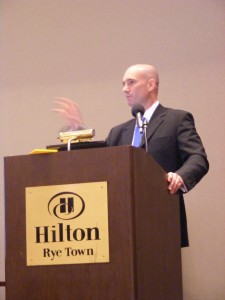
When White Plains-based Starwood Hotels and Resorts Worldwide witnessed a 40 percent drop in its spa business last year, Mark Keiser said that the company had to reevaluate what was profitable and what simply leaked revenue.
“Luxury was punished the most,” said the vice president of luxury development at a recent New York Spa Alliance Symposium at the Hilton Rye Town. “But, it also came back the quickest. We saw a lot of opportunities to add a $100 resort package here or a $50 restaurant credit there.”
It was about diversifying incentives and appealing to untapped clients.
“Spas (in Starwood hotels) really had to look hard at external customers and not just the built-in resort customers,” he said. “Meeting spaces were identified as strong contributors to margin. It”™s what owners look at. It”™s driving room rates.”
One of the first spheres of change was the actual real estate.
“Outdoor spaces are much more cost-effective,” Keiser said. “Through the use of water and landscaping, it”™s much lower per-square-foot than using marble in an indoor experience.”
Historically high in square footage, cutting the size of indoor common areas was considered in space programming.
“We”™ve done some adaptive reuse of offices to hotels, but development (of spas and hotels) as a whole has been down in the U.S. But India and China have been going gangbusters. Lenders are starting to talk about construction financing (for new-builds) but loans are onerous to borrowers.”
That”™s where conversions come into play, Keiser said, citing the Helmsley Hotel in New York, which was purchased for $313 million-plus and will be converted into a Westin.
“There”™s an opportunity for branding existing spas into our luxury space.”
Despite the bleak numbers for some spas last year, Mary Tabacchi, an associate professor at Cornell University”™s School of Hotel Administration, said “packaging of golf, spas and restaurants is a strength” and it”™s what consumers are looking for.
One of Starwood”™s biggest hits was in corporate group business.
“Where we used to have 50 to 100 people from one company coming through a property, we”™ve had to capture the local resident,” said Jeremy McCarthy, Starwood”™s director of global spa development and operations.
Todd Walter, CEO of Red Door Holdings Inc., said the Elizabeth Arden Red Door Spas have been branded to hospitality flagships as destinations.
“We don”™t get transient traffic,” he said. “We share that data with developers. We say, ”˜People will come to your hotel, shopping mall, etcetera if they have an appointment at Red Door.”™ No more than 50 percent of business is coming from our host.”
There are certain benefits to operating spas in geographic clusters, Walter said.
“If there”™s a strong spa ”˜area”™ then that means there”™s strong spa consumer demand,” he said. “So competition is good.”
One of the key factors is knowing the Red Door customer and thus, building and branding spas with their wants in mind.
“When we look at our locations, we see many types of retailing partners,” Walter said. “Customer-specific data and psychographics are most important”¦ We learned that people who lived nearby tended to come more often. That spoke to the importance of future spa selection.”

















